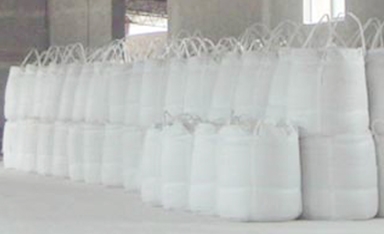The larger amount is silica brick and clay brick. The silica brick is a siliceous product containing 93% or more of SiO2, and the raw materials used for the high-purity magnesia brick are silica, waste silicon brick, and the like. Silica brick has strong resistance to acid slag, but it is easily corroded by alkaline slag. Its load softening temperature is very high, close to its refractoriness. After repeated calcination, the volume does not shrink or even slightly expands, but the anti-refractory abrasive heat Poor shock. Silica bricks are mainly used in thermal equipment such as coke ovens, glass melting furnaces, and acid steelmaking furnaces. The clay brick contains 30%~46% alumina, which uses refractory clay as the main raw material, the refractoriness is 1580~1770°C, and has good thermal shock resistance. It belongs to weakly acidic refractory material, has corrosion resistance to acid slag, and has wide application. It is a type of refractory material currently produced. Neutral refractory
The main crystalline phase in high-aluminum products is mullite and corundum. The content of corundum increases with the increase of alumina content. Corundum products containing more than 95% alumina are a kind of high-quality refractory material with wide application. The chrome brick is mainly made of chrome ore and the main crystalline phase is chromite. It has good corrosion resistance to steel slag, but has poor thermal shock resistance and low temperature deformation temperature. The chrome-magnesia bricks made of chrome ore and magnesia in different proportions have good thermal shock resistance and are mainly used as alkaline flat roof bricks. Carbonaceous products are another type of neutral refractory materials. They are classified into carbon bricks, graphite products and silicon carbide products according to the composition of carbonaceous raw materials and the mineral composition of the products. Carbon bricks are made of high-grade petroleum coke, tar and asphalt are used as binders, and fired at 1300 ° C under air. Graphite products (except natural graphite) are obtained by graphitizing carbonaceous materials in an electric furnace at 2500 to 2800 °C. The silicon carbide product is prepared by using silicon carbide as a raw material and adding a binder such as clay or silicon oxide at 1350 to 1400 °C. Silicon carbide-silicon carbide powder can also be made into a silicon nitride-silicon carbide product in an electric furnace under a nitrogen atmosphere. The refractory abrasive carbon product has a low thermal expansion coefficient, high thermal conductivity, good thermal shock resistance and high high temperature strength. It is not softened under long-term use at high temperature, is not attacked by any acid and alkali, has good salt resistance, is not wetted by metal and slag, and is light in weight. It is a high-quality high-temperature resistant material. The disadvantage is that it is easily oxidized at high temperatures and should not be used in an oxidizing atmosphere. Carbonaceous products are widely used in high temperature furnace linings (bottom, hearth, lower part of the furnace, etc.) and lining of smelting non-ferrous metal furnaces. Graphite products can be used as reaction tanks and petrochemical autoclave linings. Silicon carbide and graphite products can also be used to make bismuth copper with gold and light alloys. Alkaline refractory

It is represented by magnesium products. It contains 80% to 85% of magnesia, with periclase as the main phase. The main raw materials for the production of magnesia bricks are magnesite, seawater magnesia, which is obtained by calcining magnesium hydroxide extracted from seawater at high temperature. It has good resistance to alkaline slag and iron slag. The melting point of pure magnesium oxide is as high as 2800 ° C. Therefore, the refractoriness of magnesia bricks is higher than that of clay bricks and silica bricks. Since the mid-1950s, the production of alkaline refractories has gradually increased due to the use of oxygen-blown converter steelmaking and the use of alkaline open hearth roofs, and the production of clay bricks and silica bricks has been reduced. Alkaline refractories are mainly used in open hearth furnaces, oxygen blowing converters, electric furnaces, non-ferrous metal smelting and some high temperature thermal equipment. Oxide material
Melting points such as alumina, cerium oxide, cerium oxide, calcium oxide, zirconium oxide, uranium oxide, magnesium oxide, cerium oxide and cerium oxide are in the range of 2050 to 3050 °C. Refractory compound material
Such as carbide (silicon carbide, titanium carbide, tantalum carbide, etc.), nitride (boron nitride, silicon nitride, etc.), boride (zirconium boride, titanium boride, tantalum boride, etc.), silicide (disiliconization) Molybdenum, etc.) and sulfides (sulfurium sulfide, barium sulfide, etc.). Their melting point is from 2000 to 3887 ° C, of which the most difficult to melt is carbide. High temperature composite
Such as cermet, high temperature inorganic coating and fiber reinforced ceramics.
tel:+86-0412-7823890 Mobile phone:+86-13804925659![]()
![]()
![]()
![]()
![]()
![]()
![]()
![]()
![]()
![]()
![]()
fax:0412-7821123 email:lnhyky@126.com
Address: 16-1, the fourth phase of the Jade Pearl of Silk Road, Xiuyan County, Anshan City, Liaoning Province

Sweep, learn more +